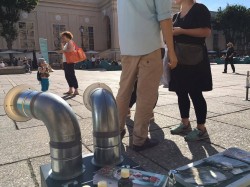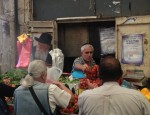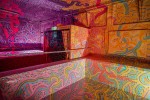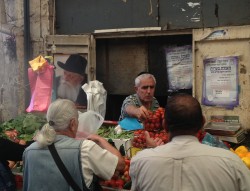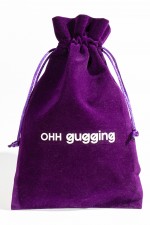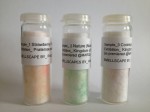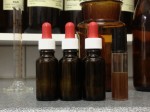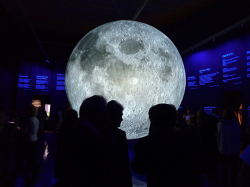 „Der Geruch des Mondes“@„Der Mond. Sehnsucht, Kunst und Wissenschaft“
„Der Geruch des Mondes“@„Der Mond. Sehnsucht, Kunst und Wissenschaft“
“The smell of the moon” @”Our Moon. Longing, Art and Science”
Naturhistorisches Museum Wien, 30.10.2019-1.6.2020
Idee und Duftkonzeption / Idea and scent-conception: Dr. Paul Divjak
Technische Umsetzung / Technical support : Elke Kies / Magic Box
“Durch professionelle Geruchsentwickler wurde nach Angaben der Apollo-Astronauten der „Geruch“ des Mondes eigens für das NHM Wien nachgebaut.” (APA)
“Dafür steigt man auf die Waage, wo man das eigene Gewicht ablesen kann. Ein kleiner Schritt für die Menschheit. Ein großer Schreck, drückt man auf den Knopf: So riecht es also auf dem Mond! (Nach verbranntem Schießpulver.)“ (Die Presse)
Der Mond, nächster Nachbar und steter Begleiter der Erde, ist nicht nur ein hochinteressanter kosmischer Körper mit bewegter Vergangenheit, sondern hat auch eine enorme Anziehungskraft auf Romantiker, Schriftsteller und Künstler. Das Naturhistorische Museum Wien nimmt das 50. Jubiläumsjahr der ersten bemannten Mondlandung zum Anlass, den Mond im Rahmen einer umfangreichen Sonderausstellung aus verschiedensten Perspektiven zu betrachten.
Ein historischer Überblick über die Erforschung und Kartierung des Mondes wird durch astronomische Grundlagen zu Mondphasen, Sonnen- und Mondfinsternissen etc. ergänzt. Die Wechselwirkung des Mondes mit der Erde und sein Einfluss auf das irdische Leben – sei es durch die Gezeiten und die dadurch bedingte biologische Vielfalt, oder durch den Einfluss des Mondlichtes auf die Reproduktion mancher Tierarten – werden ausführlich thematisiert. Der Mond als geologisches Objekt, seine Zusammensetzung und der Prozess seiner Entstehung kommen ebenso wenig zu kurz wie die Geschichte seiner Erforschung mit Hilfe der Raumfahrt und der Mondlandung. Ungewöhnliche interaktive Stationen bieten Gelegenheit, den Mond zu riechen, selbst zum Mond-Rover-Fahrer zu werden oder ein echtes Stück Mond anzufassen. Zu den Highlights zählt ein neu erworbener Mondmeteorit, der erstmals präsentiert wird.
A historical overview of the early investigation and mapping of the Moon is supplemented by the explanation of fundamental astronomical phenomena such as lunar phases, solar and lunar eclipses, etc. The interaction of the Moon with the Earth and its influence on the life on Earth – be it by the tides and the resulting biological diversity, or by the influence of the moonlight on the reproduction cycles of some animal species – are examined. The Moon as a geological object, its composition and the process of its formation, is discussed in detail, as is the history of space exploration and the Moon landings. Unusual and exciting interactive stations provide an opportunity to smell the moon, become a lunar rover driver, or touch a real piece of the Moon. Among the highlights is a spectacular newly acquired lunar meteorite, which will be shown for the first time in the context of this exhibition.
